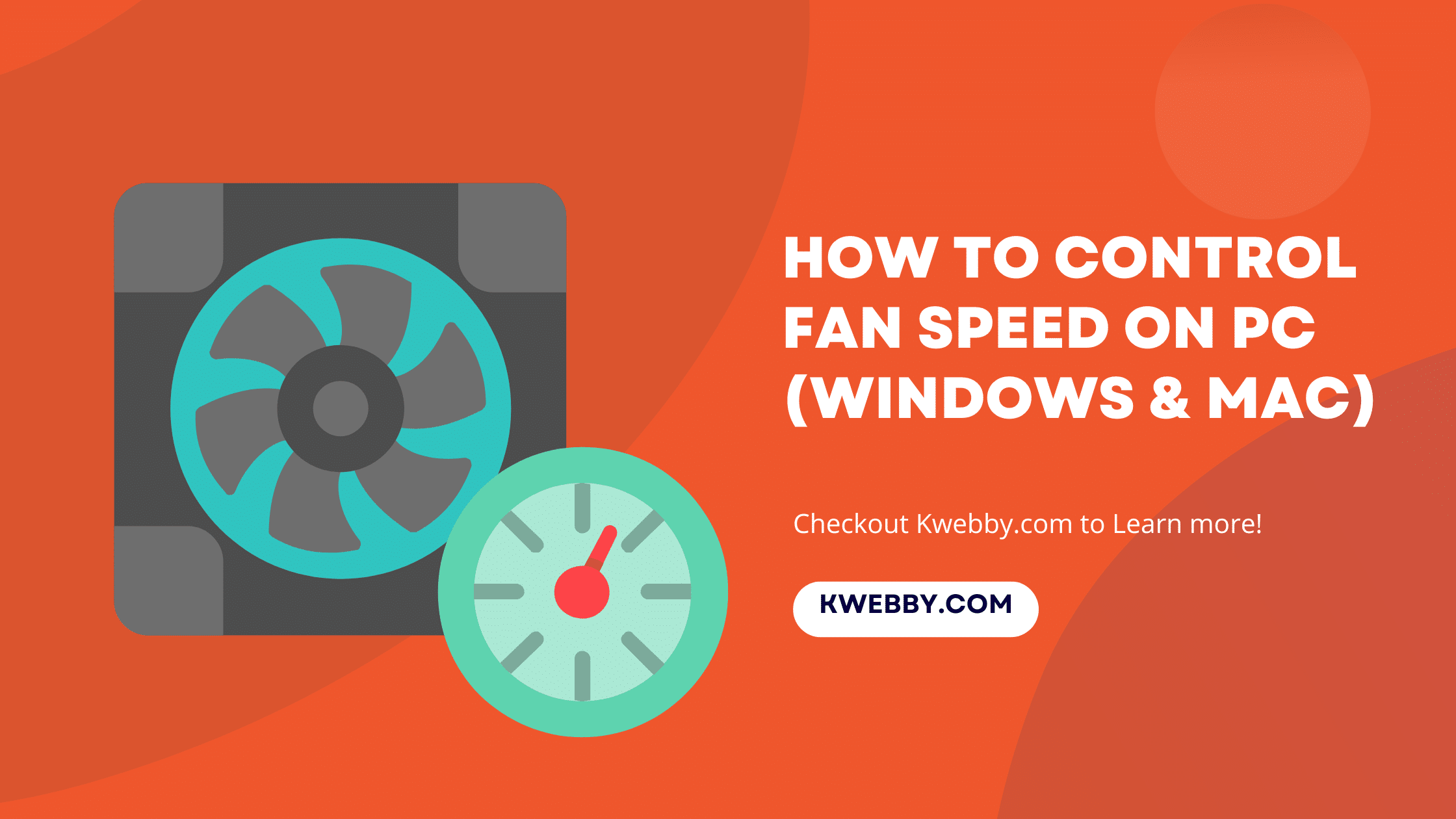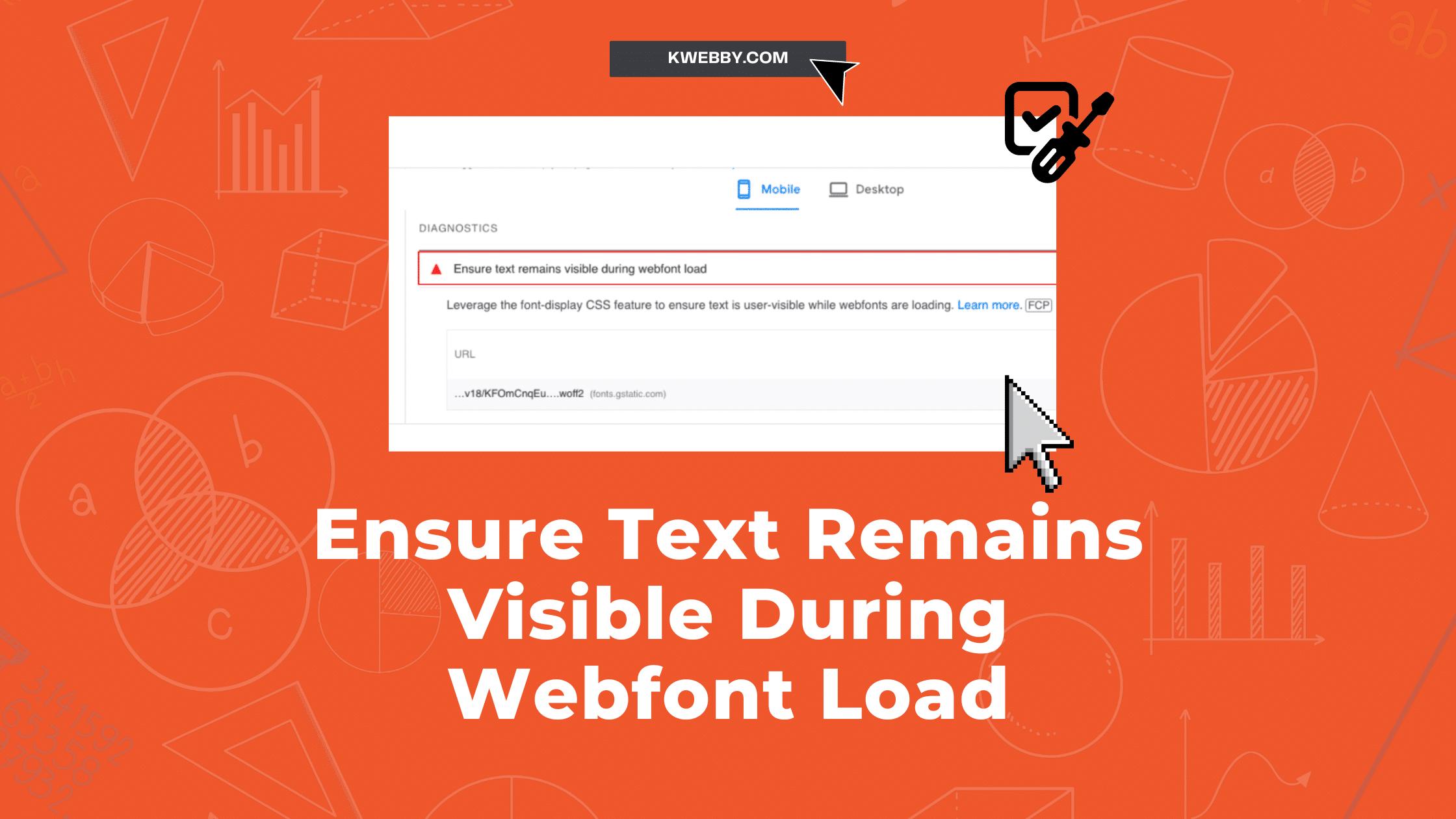Home / Blog / SEO / Advanced SEO Techniques / 5 Technical On-Page Elements to Analyze During an SEO Audit to Rank Quickly

5 Technical On-Page Elements to Analyze During an SEO Audit to Rank Quickly
Choose Your Language:
On-page optimization is one of the most important aspects of SEO. If your website isn’t properly optimized, you will struggle to rank in Google search results.
In this tutorial, we will look into 5 technical on-page elements that you need to analyze during an SEO audit.
1 What is Technical SEO?
Technical SEO is the process of optimizing your website for the search engines, focusing specifically on the technical aspects of your website. In order to be successful with SEO, it is essential to have a clear understanding of how search engines work and what they look for in terms of quality and relevance.
Technical SEO involves analyzing your web pages and making any necessary changes to improve their overall performance for the search engines. This might include optimizing specific keywords or tags, ensuring that site architecture is structured properly, and streamlining loading times.
Overall, technical SEO is an essential part of any comprehensive online marketing strategy, as it lays the foundation for all other efforts and ensures that your website is visible and accessible to users.
2 Why is Technical SEO Important?
The goal of Technical SEO is to make your website faster, easier to crawl, and more user-friendly. By improving the technical aspects of your website, you will make it easier for the search engines to index and rank your website.
Technical SEO is an essential part of any successful online presence. The goal of Technical SEO is to make your website faster, easier to crawl, and more user-friendly. By improving the technical aspects of your website, you will make it easier for search engines to index and rank your website accordingly.
This will help improve visibility and increase traffic to your site, ultimately allowing you to reach more potential customers and grow your business.
While there may be other strategies that can give your site a boost in the now, only through effective technical SEO can you build a strong online foundation that will continue to bring results over the long term.
So if you want to succeed online, start focusing on the technical side of things today!
3 5 Technical On-Page Elements to Analyze
These elements are critical for proper website functioning and must be fixed before you can move on to other aspects of optimization.
- Robot.txt File
- Sitemap
- Crawl Errors
- Multiple URLs
- Security
4 Robot.txt File
The first technical on-page element to analyze during an SEO audit is your robot.txt file. This file tells search engines which pages of your website they are allowed to crawl and index.
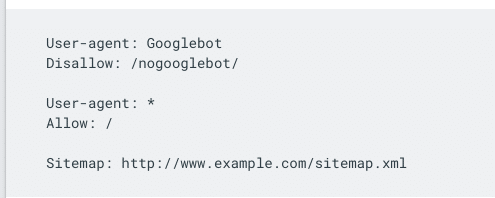
Here you can see a sample robots.txt file from google’s guide, Here a website is allowing GoogleBot to crawl URLs on their website and disallowing the same bot for “/nogooglebot/” directory.
And also there’s another user-agent which is denoted by “*” which means the website is allowing the rest of the bots also which includes all folders as mentioned in allow string which is denoted as “/”.
There’s also a sitemap syntax which implies the sitemap URL of the website, This is good practice to include your sitemaps in the robot.txt file because the first thing these Bots crawl is your robots.txt file and if you include sitemap URLs then it won’t be hard for Search Engine bots to identify your content and index on their pages.
Therefore code will look like;
user-agent:*
Disallow: /your-restricted-directories-or-files/
Allow: /Specific folders/
Sitemap: https://www.example.com/yoursitemap.xml
If you have a large website with many pages, it is important to make sure that all of the important pages are included in your robot.txt file.
If you have pages that are not included in your robot.txt file, they may not be indexed by search engines and will not show up in search results.
Here is the Tool which we have developed for generating the Robots.txt file.
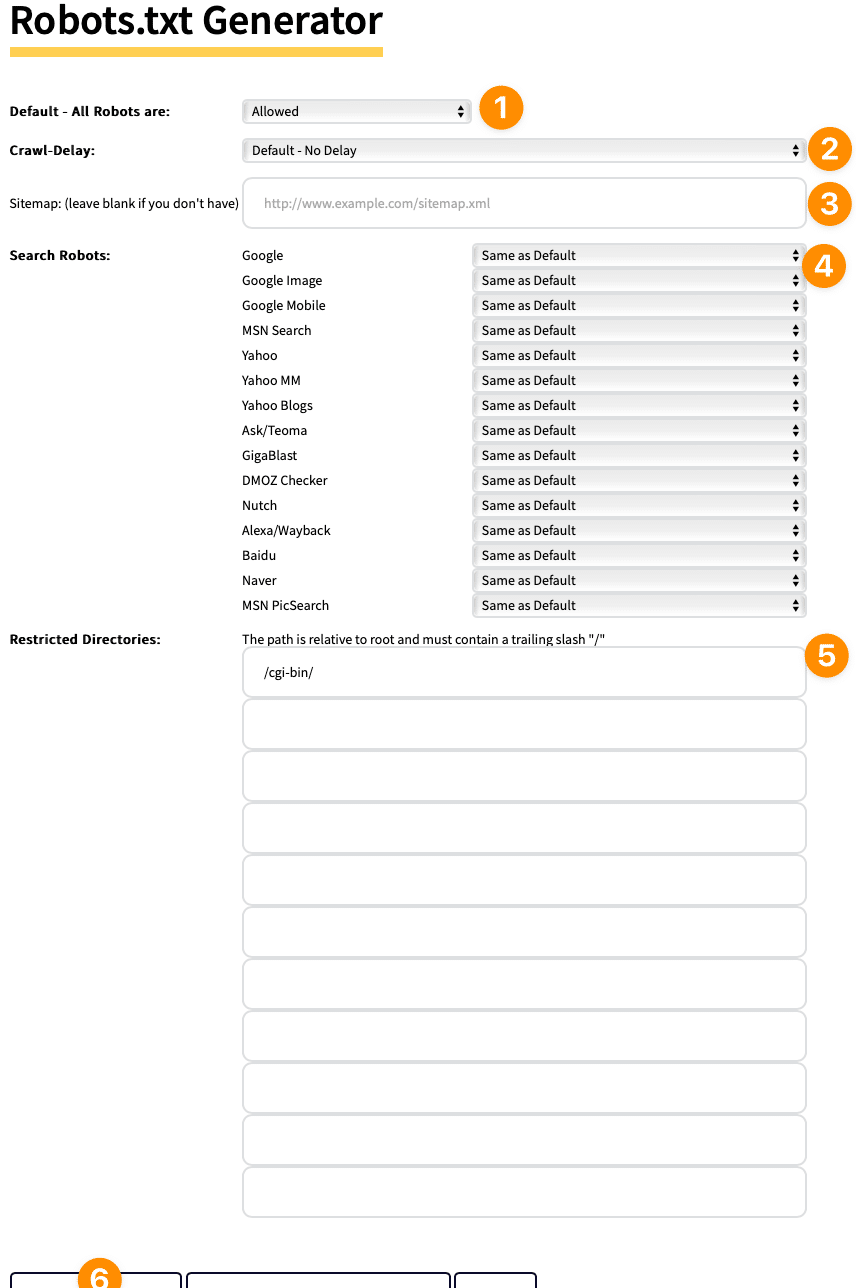
Here you can see different options or settings to enter to generate your Robots.txt file as below;
- The first is to allow or refuse all types of bots.
- The second is to define crawl-delay if you want or leave it unchecked if you’re not sure what you’re dealing with.
- The third is the sitemap URL of your website (generally /sitemap.xml) to let bots crawl the sitemap first which gives it a priority.
- Then there’s a list of bots that you want to allow or refuse from Google, Yahoo, Yandex, MSN, etc and if you want to refuse any particular bot then click the dropdown list from the same and select “refuse”.
- The last is “Restricted Directories”, These are those directories that you don’t want any bots to crawl, it’s usually a private or backend directory like “/admin” or “wp-admin” etc. It is recommended to enter some directories to it depending on your website’s platform.
Click the “Create and Save as Robots.txt” button once all the settings are done and it will generate the Robots.txt file for you which you can directly copy-paste to your website’s root directory.
5 Sitemap
The second technical on-page element to analyze during an SEO audit is your website’s sitemap. A sitemap is a file that lists all of the pages on your website.
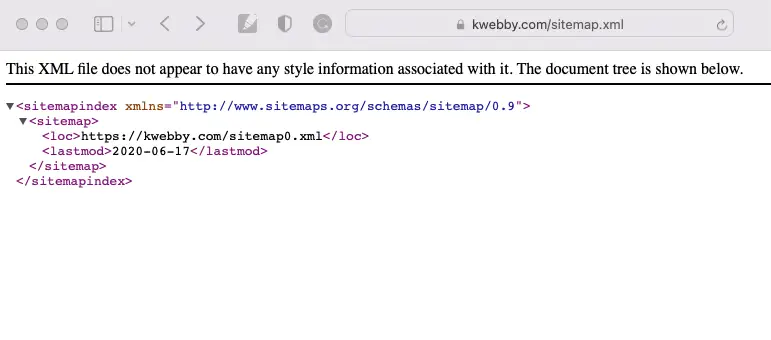
It is important to have a sitemap because it helps search engines find and index all of the pages on your website.
If you do not have a sitemap, or if your sitemap is not up to date, it is possible that some of your website’s pages will not be indexed by search engines.
I recommend this How to Add Your WordPress Sitemap to Search Engines: A Step-by-Step Guide.
You can also use our inbuilt Sitemap Generator Tool to create your sitemap and upload it to your server;
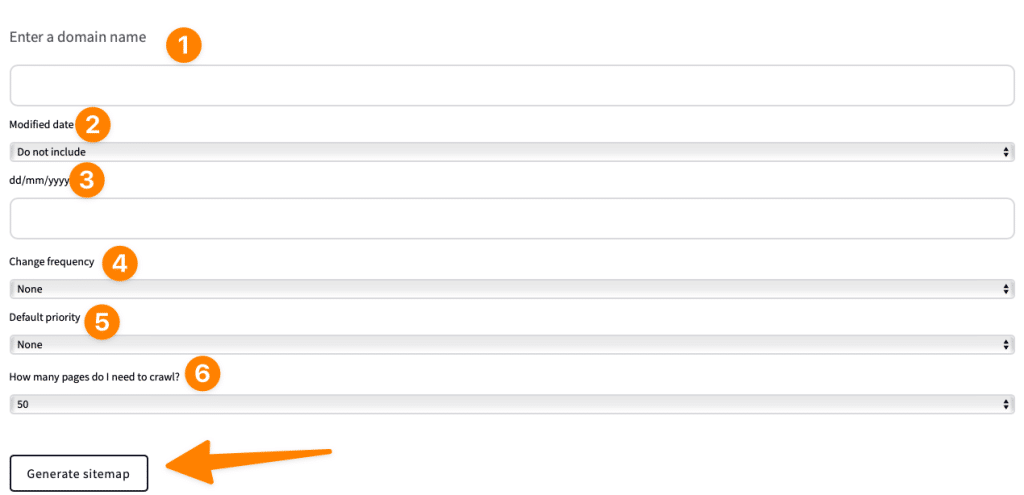
Things you need to enter are;
- Domain Name – Your domain URL i.e. Example.com
- Modified date – Last modification date of your website. For Example, If you updated your website today then you need to input the date today or you can specify the date below it.
- Change frequency – How often do you change your website, if you don’t know what to do then select “daily” or none.
- Default Priority – If you want to set priorities to your sitemap then select any of the options or if you are not aware of this option then click “None”.
- Next, Mention How Many Pages you want to crawl on your website.
I recommend you to use third-party plugins for your website or hire a coder to create a sitemap script for you that will detect any changes or update on your website and automatically add the links in the sitemap format.
6 Crawl Errors
The third technical on-page element to analyze during an SEO audit is crawl errors. Crawl errors are problems that prevent search engines from crawling and indexing your website.
There are many different types of crawl errors, but the most common are 404 errors, which occur when a page cannot be found.
If you have crawl errors on your website, it is important to fix them as soon as possible so that search engines can index your website correctly.
An easy fix is to redirect not working pages to working pages using different redirects like redirecting a not found URL (404) to 302 which is the permanent redirect code.
Please Read How to Redirect URL in WordPress: A Comprehensive Guide (4 Methods)
The above-linked guide is not only about WordPress but we have covered non-WordPress websites where you can use simple redirect codes to redirect your non-working or broken URLs to the working ones.
Alternatively, You can use WWW Redirect Checker to detect if the URL has any redirects or not, Just enter the URL of the page you’re trying to detect as follows;

and Click on “submit“, it will let you know the status of your redirect.
After checking WWW Redirect and it returns 404 or bad then you need to redirect it to a new URL using Htaccess or Nginx redirect rule which we have described here.
7 Multiple URLs
The fourth technical on-page element to analyze during an SEO audit is multiple URLs. Multiple URLs can be a problem because they can confuse search engines and cause them to index the wrong page.
If you have multiple URLs for the same page, it is important to choose one URL and redirect all of the other URLs to that URL.
You can use a 301 redirect to redirect URLs. A 301 redirect is a permanent redirect, which means that the old URL will be replaced by the new URL and all of the old URL’s authority will be transferred to the new URL.
The best way to find out if you have multiple URLs for the same page is to use a tool like Screaming Frog.
Screaming Frog is a free tool that allows you to crawl up to 500 URLs at a time.
Once you have downloaded and installed Screaming Frog, simply enter your website’s URL and click “Start.”
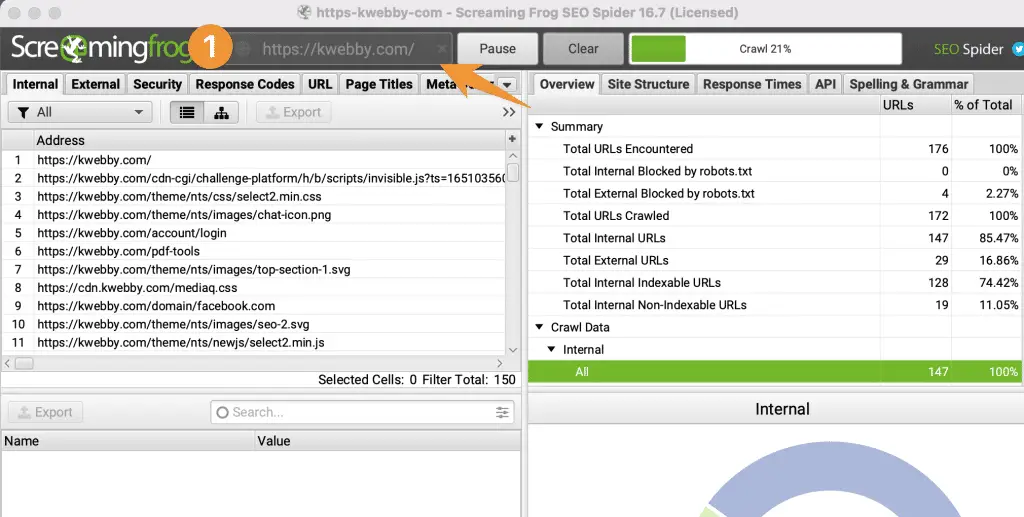
The tool will then crawl your website and return a list of all of the URLs it found.
If you have multiple URLs for the same page, you will see them listed next to each other.
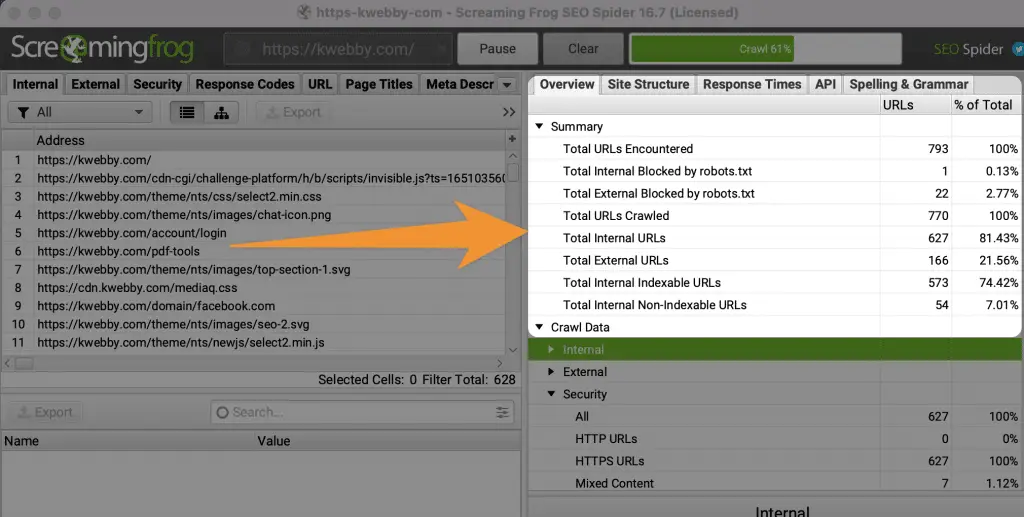
Once you have identified the multiple URLs, you can redirect them to the correct URL using a 301 redirect.
8 Security
The fifth and final technical on-page element to analyze during an SEO audit is security. It is important to make sure that your website is secure because if it is not, it could be hacked.
If your website is hacked, it could lead to a loss of traffic and rankings in search results.
Some Tips to make your website secure;
8.1 Strong Password:
Use a strong password for your WordPress admin area and FTP account. You can use a Password Generator to create a strong password.
You can also use our Password Generator tool to generate a strong password which is hard to crack by hackers.
Two-Factor Authentication: Two-factor authentication is an extra layer of security that requires you to enter a code that is sent to your phone or email when you try to log in.
This makes it difficult for hackers to guess your password because they would also need to have access to your phone or email.
8.2 SSL Certificate
SSL is a security protocol that encrypts data between your website and visitors’ web browsers.
You can tell if a website has an SSL certificate by looking for the padlock icon in the address bar.
You can use screaming frog’s SEO Spider to find out the number of non-secure or HTTP URLs on your website in the security section as follows;
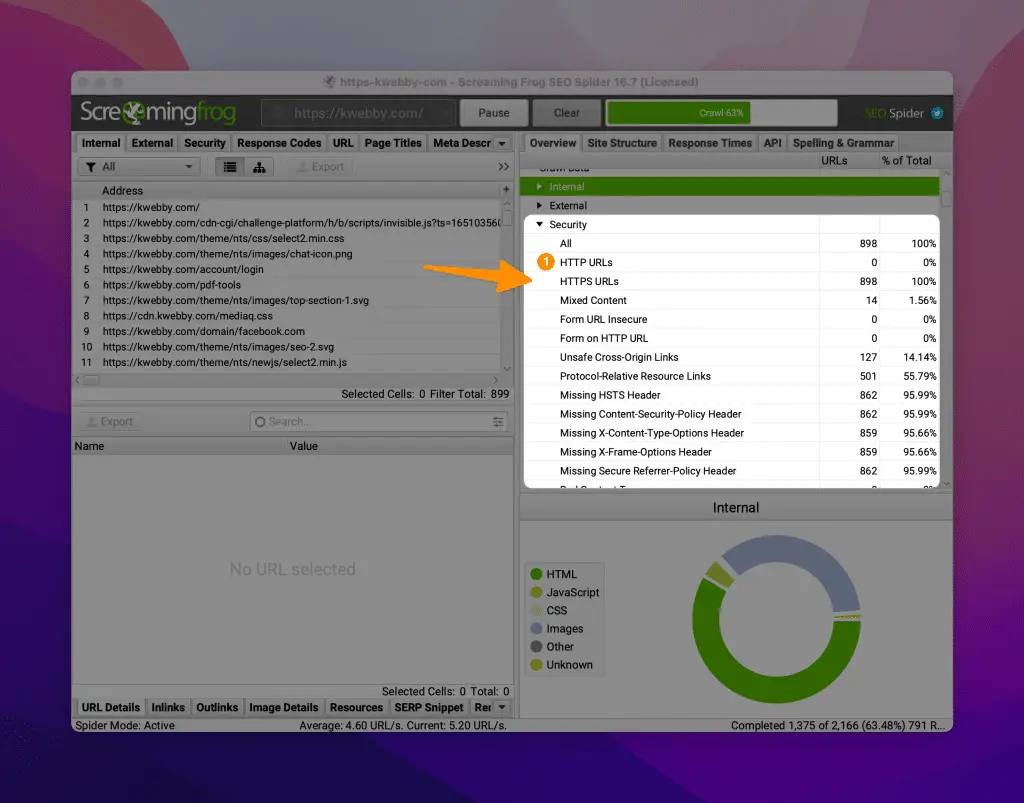
If you do not have an SSL certificate, you can get one from your web host or a company like Symantec.
8.3 Uninstall Unnecessary Plugins and Themes
It is important to delete any unnecessary plugins and themes from your WordPress website.
If you have plugins and themes that you are not using, they could be a security risk because they could contain vulnerabilities that hackers could exploit.
You can delete a plugin or theme by going to the “Plugins” or “Themes” page in your WordPress admin area and clicking “Delete.”
8.4 Backups
It is important to create backups of your website so that if something goes wrong, you can restore it.
Read How to back up WordPress site (5 Methods) – The Ultimate Guide to secure your website if it Getting hacked or corrupted.
8.5 Secure With Cloudflare
Cloudflare is a free service that provides security and performance enhancements for websites.
It can help to protect your website from attacks and make it faster by caching your website’s content.
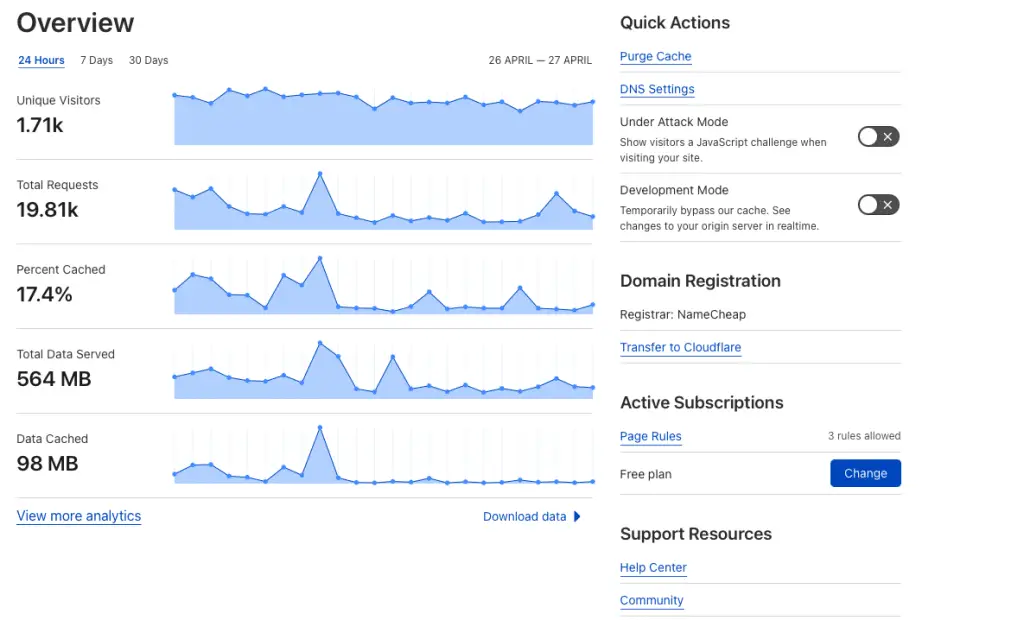
You can sign up for Cloudflare at their website.
I hope this tutorial helped you learn about the technical on-page elements
These are just a few of the many technical on-page elements that you need to analyze during an SEO audit. If you want to learn more about SEO audits and how to perform them, we recommend taking our SEO Audit Course.
In the meantime, if you have any questions about technical on-page elements or anything else related to SEO, feel free to ask us in the comments section below. Thanks for reading!


